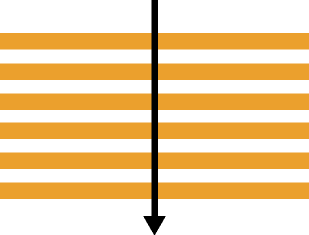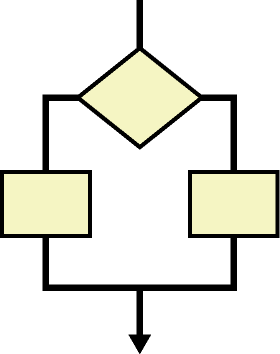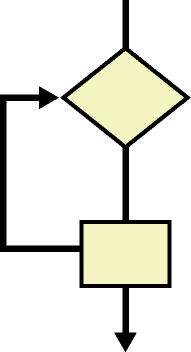 10.7. Relationship Between Data Types and Control Structures
by Steve McConnell
Code Complete, Second Edition
10.7. Relationship Between Data Types and Control Structures
by Steve McConnell
Code Complete, Second Edition
- Code Complete, Second Edition
- Preface
- Acknowledgments
- About the Author
- I. Laying the Foundation
- 1. Welcome to Software Construction
- 2. Metaphors for a Richer Understanding of Software Development
- 3. Measure Twice, Cut Once: Upstream Prerequisites
- 3.1. Importance of Prerequisites
- 3.2. Determine the Kind of Software You're Working On
- 3.3. Problem-Definition Prerequisite
- 3.4. Requirements Prerequisite
- 3.5. Architecture Prerequisite
- Typical Architectural Components
- Program Organization
- Major Classes
- Data Design
- Business Rules
- User Interface Design
- Resource Management
- Security
- Performance
- Scalability
- Interoperability
- Internationalization/Localization
- Input/Output
- Error Processing
- Fault Tolerance
- Architectural Feasibility
- Overengineering
- Buy-vs.-Build Decisions
- Reuse Decisions
- Change Strategy
- General Architectural Quality
- Typical Architectural Components
- 3.6. Amount of Time to Spend on Upstream Prerequisites
- Additional Resources
- Key Points
- 4. Key Construction Decisions
- II. Creating High-Quality Code
- 5. Design in Construction
- 5.1. Design Challenges
- 5.2. Key Design Concepts
- 5.3. Design Building Blocks: Heuristics
- Find Real-World Objects
- Form Consistent Abstractions
- Encapsulate Implementation Details
- Inherit—When Inheritance Simplifies the Design
- Hide Secrets (Information Hiding)
- Identify Areas Likely to Change
- Keep Coupling Loose
- Look for Common Design Patterns
- Other Heuristics
- Summary of Design Heuristics
- Guidelines for Using Heuristics
- 5.4. Design Practices
- 5.5. Comments on Popular Methodologies
- Additional Resources
- Key Points
- 6. Working Classes
- 7. High-Quality Routines
- 8. Defensive Programming
- 8.1. Protecting Your Program from Invalid Inputs
- 8.2. Assertions
- 8.3. Error-Handling Techniques
- 8.4. Exceptions
- 8.5. Barricade Your Program to Contain the Damage Caused by Errors
- 8.6. Debugging Aids
- 8.7. Determining How Much Defensive Programming to Leave in Production Code
- 8.8. Being Defensive About Defensive Programming
- Additional Resources
- Key Points
- 9. The Pseudocode Programming Process
- 5. Design in Construction
- III. Variables
- 10. General Issues in Using Variables
- 11. The Power of Variable Names
- 12. Fundamental Data Types
- 13. Unusual Data Types
- IV. Statements
- 14. Organizing Straight-Line Code
- 15. Using Conditionals
- 16. Controlling Loops
- 17. Unusual Control Structures
- 18. Table-Driven Methods
- 19. General Control Issues
- 19.1. Boolean Expressions
- Using true and false for Boolean Tests
- Making Complicated Expressions Simple
- Forming Boolean Expressions Positively
- Using Parentheses to Clarify Boolean Expressions
- Knowing How Boolean Expressions Are Evaluated
- Writing Numeric Expressions in Number-Line Order
- Guidelines for Comparisons to 0
- Common Problems with Boolean Expressions
- 19.2. Compound Statements (Blocks)
- 19.3. Null Statements
- 19.4. Taming Dangerously Deep Nesting
- 19.5. A Programming Foundation: Structured Programming
- 19.6. Control Structures and Complexity
- Key Points
- 19.1. Boolean Expressions
- V. Code Improvements
- 20. The Software-Quality Landscape
- 21. Collaborative Construction
- 22. Developer Testing
- 23. Debugging
- 24. Refactoring
- 25. Code-Tuning Strategies
- 26. Code-Tuning Techniques
- VI. System Considerations
- 27. How Program Size Affects Construction
- 28. Managing Construction
- 29. Integration
- 30. Programming Tools
- VII. Software Craftsmanship
- 31. Layout and Style
- 32. Self-Documenting Code
- 32.1. External Documentation
- 32.2. Programming Style as Documentation
- 32.3. To Comment or Not to Comment
- 32.4. Keys to Effective Comments
- 32.5. Commenting Techniques
- 32.6. IEEE Standards
- Additional Resources
- Key Points
- 33. Personal Character
- 33.1. Isn't Personal Character Off the Topic?
- 33.2. Intelligence and Humility
- 33.3. Curiosity
- 33.4. Intellectual Honesty
- 33.5. Communication and Cooperation
- 33.6. Creativity and Discipline
- 33.7. Laziness
- 33.8. Characteristics That Don't Matter As Much As You Might Think
- 33.9. Habits
- Additional Resources
- Key Points
- 34. Themes in Software Craftsmanship
- 34.1. Conquer Complexity
- 34.2. Pick Your Process
- 34.3. Write Programs for People First, Computers Second
- 34.4. Program into Your Language, Not in It
- 34.5. Focus Your Attention with the Help of Conventions
- 34.6. Program in Terms of the Problem Domain
- 34.7. Watch for Falling Rocks
- 34.8. Iterate, Repeatedly, Again and Again
- 34.9. Thou Shalt Rend Software and Religion Asunder
- Key Points
- 35. Where to Find More Information
- Bibliography
- Index
- About the Author
Data types and control structures relate to each other in well-defined ways that were originally described by the British computer scientist Michael Jackson (Jackson 1975). This section sketches the regular relationship between data and control flow.
Jackson draws connections between three types of data and corresponding control structures:
Sequential data translates to sequential statements in a program. Sequences consist of clusters of data used together in a certain order, as suggested by Figure 10-2. If you have five statements in a row that handle five different values, they are sequential statements. If you read an employee's name, Social Security Number, address, phone number, and age from a file, you'd have sequential statements in your program to read sequential data from the file.
Cross-Reference
For details on conditionals, see Chapter 15.
Selective data translates to if and case statements in a program. In general, selective data is a collection in which one of several pieces of data is used at any particular time, but only one, as shown in Figure 10-3. The corresponding program statements must do the actual selection, and they consist of if-then-else or case statements. If you had an employee payroll program, you might process employees differently depending on whether they were paid hourly or salaried. Again, patterns in the code match patterns in the data.
Cross-Reference
For details on sequences, see Chapter 14.
Iterative data translates to for, repeat, and while looping structures in a program. Iterative data is the same type of data repeated several times, as suggested by Figure 10-4. Typically, iterative data is stored as elements in a container, records in a file, or elements in an array. You might have a list of Social Security Numbers that you read from a file. The iterative data would match the iterative code loop used to read the data.
Cross-Reference
For details on loops, see Chapter 16.
Your real data can be combinations of the sequential, selective, and iterative types of data. You can combine the simple building blocks to describe more complicated data types.
-
No Comment


